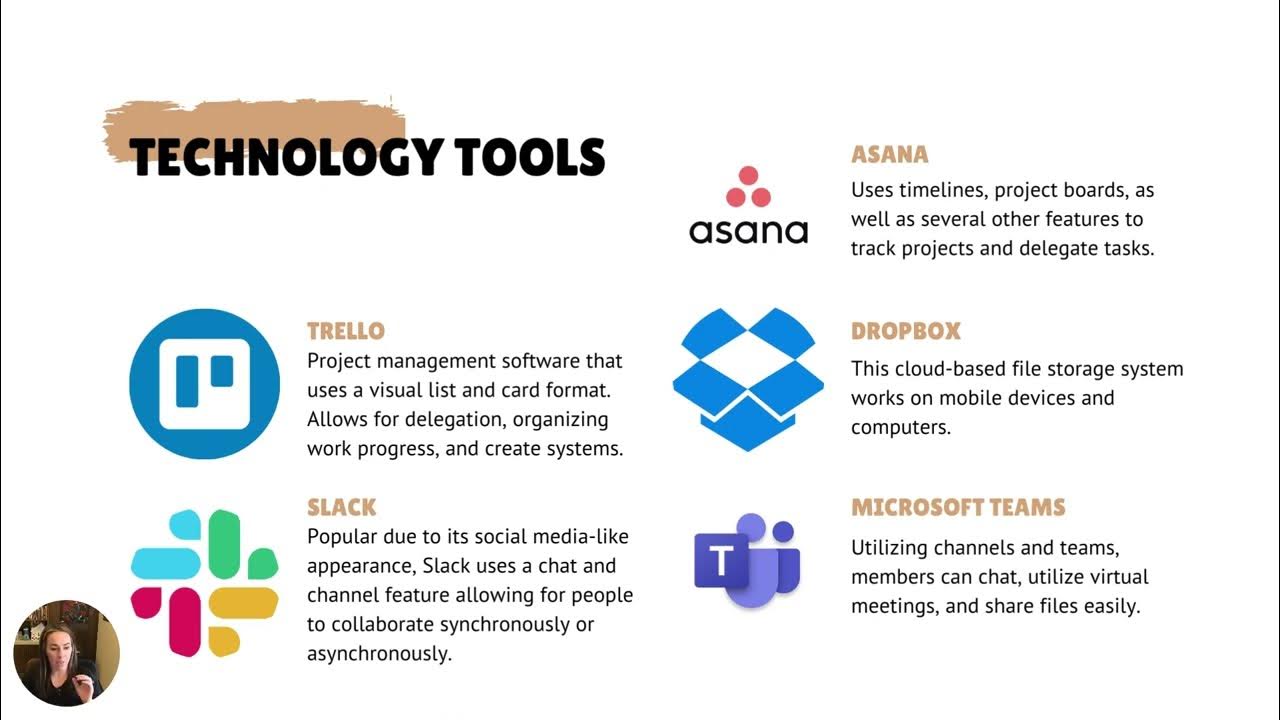Types of teams
Summary
TLDRThis video explores the dynamics of working in virtual and distributed teams, focusing on three key aspects: asynchronous work, communication challenges, and expectations management. Virtual teams, often spread across different time zones, face difficulties in coordinating tasks without face-to-face interaction. The video highlights the need for clear communication tools and expectations around response times to avoid miscommunication. It also introduces the concept of self-managed agile teams, where members take responsibility for their tasks and collaborate closely, requiring minimal guidance but strong communication to stay aligned with goals.
Takeaways
- 😀 Teams are groups of two or more people working towards a common goal.
- 😀 Traditional (co-located) teams work together in physical proximity, benefiting from face-to-face communication.
- 😀 Virtual (distributed) teams can be spread across different time zones and work asynchronously.
- 😀 Asynchronous work in virtual teams requires clear communication and careful task coordination.
- 😀 Virtual teams often rely on digital tools and need to decide between shared documents or versioned files.
- 😀 Traditional teams benefit from richer communication, including nonverbal cues, tone of voice, and body language.
- 😀 Virtual teams miss the richness of face-to-face interaction, which can affect rapport building and task dynamics.
- 😀 Setting clear expectations for response times and communication norms is crucial in both virtual and traditional teams.
- 😀 Misunderstanding email response expectations can lead to stress and miscommunication in virtual teams.
- 😀 Self-managed agile teams are autonomous and manage their own workload through collaborative decision-making.
- 😀 Unlike traditional teams with a single leader, self-managed agile teams shift tasks based on need and expertise.
- 😀 A successful self-managed agile team requires clear communication of its vision and goals to coordinate effectively.
Q & A
What is a team, according to the script?
-A team is a group of two or more people working towards a common goal.
What is the main difference between traditional co-located teams and virtual teams?
-Co-located teams work together in physical proximity, while virtual teams may be located in different parts of the world but work for the same organization.
What challenges arise for virtual teams working across time zones?
-Virtual teams working across time zones may face difficulties in coordinating work and maintaining smooth communication due to the difference in working hours.
What is asynchronous work, and why is it important in virtual teams?
-Asynchronous work means team members work at different times, and this requires careful coordination and clear communication of tasks and resources to prevent errors or duplication.
What role do tools play in virtual teams, and how does the choice of tool affect their work?
-The choice of tools is critical in virtual teams. Tools like shared documents or version control systems help manage tasks and the flow of work, reducing the risk of double work or missed opportunities.
What is the key difference between communication in co-located teams and virtual teams?
-Co-located teams can communicate face-to-face, which provides richer communication through nonverbal cues and tone of voice, whereas virtual teams mainly rely on digital communication, which may lack these nuances.
Why is managing response speed important in virtual teams?
-Clear expectations about response speed are crucial in virtual teams to avoid miscommunications and unnecessary stress, especially since team members may overestimate how quickly responses are expected.
What is one legal aspect of email communication mentioned in the script?
-In some countries, it is illegal to respond to emails after 6 p.m., highlighting the importance of establishing clear norms around communication times.
What defines a self-managed agile team, and how do they function?
-Self-managed agile teams consist of individuals who manage their own workload and make decisions collaboratively. They shift tasks amongst themselves based on need and best fit, with minimal external guidance.
What challenge do self-managed agile teams face, and how can they overcome it?
-Self-managed agile teams face the challenge of letting go of traditional hierarchical work structures. They need clear communication of goals and vision to function effectively and ensure coordination.
Outlines

このセクションは有料ユーザー限定です。 アクセスするには、アップグレードをお願いします。
今すぐアップグレードMindmap

このセクションは有料ユーザー限定です。 アクセスするには、アップグレードをお願いします。
今すぐアップグレードKeywords

このセクションは有料ユーザー限定です。 アクセスするには、アップグレードをお願いします。
今すぐアップグレードHighlights

このセクションは有料ユーザー限定です。 アクセスするには、アップグレードをお願いします。
今すぐアップグレードTranscripts

このセクションは有料ユーザー限定です。 アクセスするには、アップグレードをお願いします。
今すぐアップグレード5.0 / 5 (0 votes)






